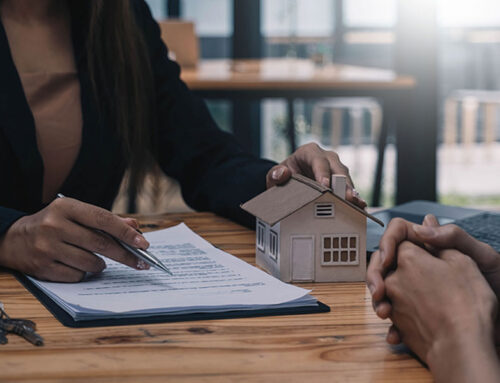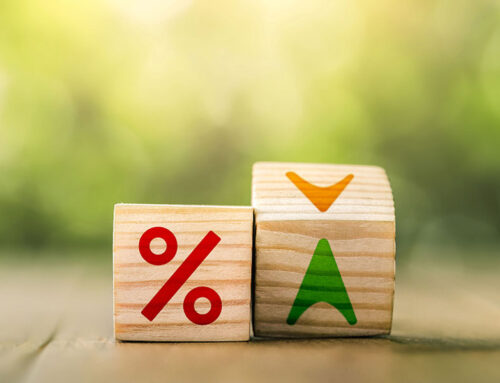Whenever the real estate market starts to get real interesting, like it is right now as we round into a recession, you’ll start to see handmade signs pop up like weeds. On nearly every street corner and tied to a hundred fences you’ll see signs that say “GET RICH QUICK IN REAL ESTATE. I’LL TEACH YOU THE SECRET.”
Now, on one level, this makes me chuckle. If you had a true formula for getting rich in real estate, you could probably afford a better sign. But, honestly, it’s a problem. People looking to invest in a recession with less uncertainty want a simple formula. And, while most people know not to trust the sign on the corner, they may follow something called “the 70% rule.”
There is some comfort in easy math. It feels better than eyeballing it. But, if you want to achieve your real estate investing goals in this market, you need more than a formula for wholesaling houses. You need training, tools, and the ability to work harder than punching a few buttons on a calculator. Let me walk you through the why and how.
Understanding the Formula for Wholesaling Houses
The 70% rule is a formula that some investors use to determine if they will be able to make a profit on an investment house. Many people think that this is a really good way to approach wholesaling houses, too. But this could lead you astray because the truth is, there is no hard and fast rule for wholesaling houses. If there was, everyone would be doing it.
OK, this is going to get a little math-oriented. But, if you’re afraid of a little math, this might not be the best career for you. After all, wholesaling houses as a full-time goal requires you to do a lot of calculations and estimations. That’s why, if you are new to the business, the 70% rule might seem easy enough.
So here’s what the formula is:
(ARV X .70) – Rehab Costs = Maximum Purchase Price
ARV is the “After Repair Value.” That is, what you can expect to sell the house for. So, if you find a motivated seller and expect a house to sell for $150,000 after putting in $15,000 of work into it, you take these steps.
1. Multiply 150,000 x .70
2. Subtract $15,000
This is 105,000 minus 15,000, which comes to 90,000.
So, by the 70% rule, you don’t want to pay any more than 90,000 for the house. If you do, it’ll eat into your potential profits, since this takes into account the time and money you are spending waiting on it to sell, your loan, and more. Remember, breaking even, or just making a little bit of returns, is a waste of time.
Now, I hear you saying, how does this impact my wholesaling business? In some ways it simplifies it: you can cut out Step #2 since you aren’t paying for any repairs. Then, in theory, all you have to do is multiply by .70 and that’s the price you can buy at.
Or, so some investors think.
Here’s their line of thinking: If the house ARV is $150,000, and you buy it at $105,000, you have a $45,000 cushion to sell it at. If you turn it around quickly, that’s pretty good.
So what’s the problem?
The Problem With the 70% Rule For Wholesaling Houses
If you are new to this business, I completely understand why the 70% rule seems appealing. It is hard and fast and, when you do the math, the numbers look really good. I’d be pretty happy with that $45k we sketched out above.
Of course, numbers are never that round. Life is never that simple. To understand why this might not be the best system, imagine setting foot in a house you just bought. You take a deep breath, inhaling the feeling of a smart purchase. You take another step forward—and your foot steps right through the wood. It’s rotten.
There’s a lot that can go wrong with any purchase. When you are wholesaling, you can’t just take your own estimate and run with it. You have to take it step by step and think the whole thing through.
You also have to take into account what your investor-buyer, who is going to most likely be flipping it, will be purchasing the property. So, you need to adjust your asking price to what they would be willing to pay.
See, your idea of “After Repair Value” might not actually line up with your investor-buyers analysis of the market. There are a ton of factors that you have to take into account that are less cut and dry than the formula for wholesaling houses leads you to believe. Among these are:
Neighborhood
Is this a place where people want to live? Is it up-and-coming or just run-down?
Just looking up property values on Zillow isn’t gonna cut it here. Nevermind that Zillow’s data is known to be flawed. There are other factors at play, like how good the schools are funded and whether a large commercial development is slated to take over the ‘feel’ of the place.
What you don’t know is what you don’t know. It’s going to take some research if you want to pitch the house to another investor as a good wholesale deal.
Average home prices
You may think you have a steal when a house is selling for way less than neighboring values. And, maybe you do. But, maybe there is a reason why it is selling for so little.
I call these “white elephants.” They are houses that look good from the street. The immediate neighborhood seems nice enough. But, you don’t notice that the house is situated on a culdesac closest to the freeway and traffic noise rattles the windows during rush hour. You visited at noon.
Age of the house
That cool mid-century might be an architectural gem but the cost of making it right for modern home buyers could be excessive.
A new porch isn’t going to cost the same as it would on an older house. Once you dig into these historic properties, it’s often like peeling back an onion. Remove a few unstable boards and you may find rot, rats, or worse. And, if the house has a historic designation, you’d better factor in extra costs for permits.
Hidden repairs
Did you perform a full inspection? Do you know if the septic is busted or the roof leaks? You may not—but the professional fix-and-flipper almost certainly will, and they’ll be knocking every dollar of that off their offer.
Another factor is your own unspoken biases. These come in two types.
1. Falling in love with a house. You would want to live here. Heck, a few throw pillows, and you’re already there. And, while there might not be any stores nearby, it is quiet. Just because you like something doesn’t mean the market is going to support that.
2 Falling in love with a deal. Once you convince yourself that this is a money-maker, it becomes agonizingly hard to walk away. Trust me, I know this. If you are in love with the idea of a deal, you develop a lot of blind spots.
So, how does this play out? You use the 70% formula. You pay $105,000 for it and are already envisioning your return. But, you didn’t do a close inspection. You didn’t want to bother the owner too much. Maybe you felt uncomfortable with how to do it, maybe you didn’t feel like you had to. That’s normal starting out—but it is also dangerous.
So, your investor-buyer pokes around. They see the floorboards, and they see the neighborhood, and they see those high-voltage transformers a block away.
How’d you miss those?
Suddenly your investor-buyer is dropping their offer and you’re sitting on a house. That 30% profit becomes 20% becomes 10% becomes you trying to break even. That’s not an effective wholesaling business plan.
That’s the problem with a rule. Not everyone is going to play by it.
A Quick Note on Rules and Plans—Especially for Wholesaling
Whenever I am talking to someone about real estate investing, I like to bring up a famous quote.
“Everyone has a plan until they get punched in the mouth.”
–Mike Tyson, 20th-21st-Century American Boxer/ Philosopher
This quote means more or less the same thing when you are wholesaling. You have a plan and you fall back on rules and order, but the field never is quite as neat. Especially during these times of recession, with the market in flux and full of tremendous possibilities, plans can change quickly.
That doesn’t mean you should despair. It just means you need to be able to adapt. And, the only way to do that is with experience, training, and tools.
A Better Way To Wholesale Houses: Without a Formula
Obviously, if you are new to wholesaling, experience is hard to come by. That’s understandable. But, I’ve found the best way to overcome that, and to last long enough to get experience, is to have support and training. And the best way to get that is to become an independently owned and operated HomeVestors® franchisee. I know this because I am one.
When you become a HomeVestors® franchisee, you get a ton of support starting with a comprehensive one-week training and moving forward with ongoing professional mentorship. You won’t be left alone making decisions according to some formula. Your mentor will have your back when you run the numbers to understand if a wholesale deal makes sense. This advice isn’t from some “guru,” and it sure isn’t from someone with a sign on an overpass.
Then, you also get access to the proprietary analysis and valuation software, ValueChek™. ValueChekTM helps you actually understand what the value of the house will be when rehabbed and sold. It also details the cost of the repairs, giving you more insight into what your buyers will offer.
All of this is invaluable because it gives you flexibility. It gives you the ability to maneuver in a changing market and lets you see a deal outside a rigid and often counterproductive rule. It isn’t an aphorism; it is knowledge.
Really, tools + training + support + wisdom is the best formula for wholesaling houses. If you want to see how that adds up, request information on becoming a franchisee today.
Each franchise office is independently owned and operated.
Contact
"*" indicates required fields






